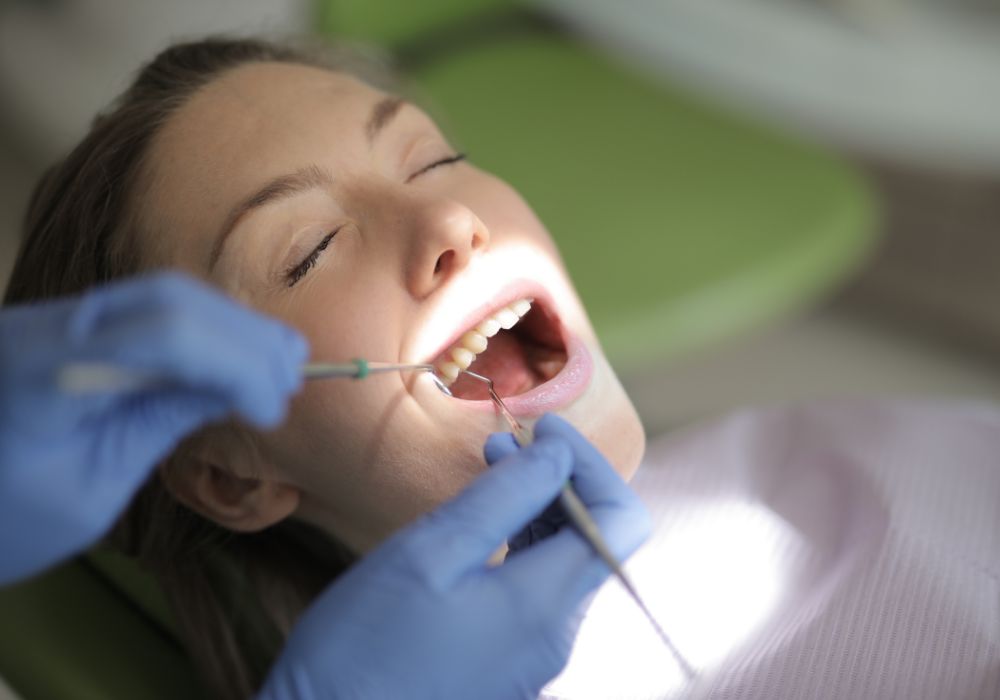Have you ever wondered if teeth go through bone? It’s a common question, and the answer is yes, but not in the way you might think. Teeth are not actually considered bones, but they are connected to the jawbone by a network of ligaments and tissues. This connection allows the teeth to move and function properly when you eat, speak, and smile.
The part of the tooth that extends into the bone and holds it in place is called the root. It’s made up of several parts, including the root canal, which contains nerves and blood vessels, and the periodontal ligament, which connects the tooth to the jawbone. When you lose a tooth, the bone that supported it begins to deteriorate because it is no longer being stimulated by the pressure of the tooth. This can lead to bone loss and other dental problems.
Anatomy of Teeth

Structure of Teeth
Teeth are made up of different layers that work together to perform various functions. The visible part of the tooth is called the crown, while the part that is embedded in the jawbone is called the root. The following are the different layers of a tooth:
- Enamel: This is the hard, outermost layer of the tooth that protects it from wear and tear. It is the hardest substance in the human body and is mostly made up of calcium phosphate.
- Dentin: This is the layer beneath the enamel and is softer than enamel. It contains tiny tubes that connect to the nerves in the pulp.
- Pulp: This is the soft, innermost part of the tooth that contains nerves, blood vessels, and connective tissue. It is responsible for providing nourishment to the tooth and transmitting signals to the brain.
- Cementum: This is the layer that covers the root of the tooth and helps anchor it to the jawbone.
Teeth Positioning in Jawbone
Teeth are positioned in the jawbone in sockets called alveoli. The alveoli are lined with a layer of bone called the alveolar bone, which provides support and stability to the teeth. The roots of the teeth are embedded in the alveolar bone and are held in place by periodontal ligaments. These ligaments are made up of connective tissue and help cushion the teeth against the pressure of chewing.
The teeth are arranged in two arches in the mouth – the upper arch and the lower arch. The upper arch is called the maxilla, while the lower arch is called the mandible. The teeth in each arch are divided into four types – incisors, canines, premolars, and molars. Each type of tooth has a specific shape and function, and they work together to help you bite, chew, and speak properly.
In conclusion, teeth are complex structures that play a crucial role in maintaining your overall health and well-being. Understanding their anatomy and positioning in the jawbone can help you take better care of them and avoid dental problems in the future.
Teeth Development
Teeth development is a complex process that involves the formation and growth of teeth within the jawbone. Teeth are formed from a combination of mesenchyme and epithelium tissues, and the process of tooth development is regulated by a complex interplay of genetic and environmental factors.
Tooth Eruption
Tooth eruption is the process by which teeth emerge from the gums and become visible in the mouth. This process typically begins around 6 months of age and continues until all primary teeth have erupted, usually by age 3. Permanent teeth then begin to erupt around age 6 and continue until the late teenage years.
During tooth eruption, the tooth moves through the jawbone until it reaches the surface of the gums. The process is facilitated by the breakdown of the overlying bone and gum tissue, as well as the growth of the tooth root. Once the tooth has emerged from the gum, it is fully functional and can be used for biting and chewing.
Tooth Root Development
Tooth root development is the process by which the roots of the teeth grow and anchor the teeth in place within the jawbone. This process begins during the bud stage of tooth development and continues throughout the life of the tooth.
During tooth root development, the cells that will form the tooth root migrate from the dental papilla and differentiate into various cell types, including cementoblasts, which form the cementum that covers the root surface, and odontoblasts, which form the dentin that makes up the bulk of the tooth root.
As the tooth root grows, it extends deeper into the jawbone, where it is anchored by the periodontal ligament, a specialized connective tissue that attaches the tooth root to the surrounding bone. The periodontal ligament also helps to cushion the tooth against the forces of biting and chewing, and provides a pathway for blood vessels and nerves to enter the tooth.
In summary, teeth development is a complex process that involves the growth and formation of teeth within the jawbone. Tooth eruption and root development are two key aspects of this process, and are essential for the proper function of the teeth.
Bone Remodeling Around Teeth

When it comes to teeth, bone remodeling is an essential process that occurs around them. Bone remodeling is the process of removing old bone tissue and replacing it with new bone tissue. This process is necessary for maintaining the strength and structure of bones. In the case of teeth, bone remodeling occurs around the teeth to support them and keep them in place.
Role of Periodontal Ligaments
Periodontal ligaments are connective tissues that connect the teeth to the jawbone. These ligaments play a crucial role in bone remodeling around teeth. When you chew or bite down on food, the periodontal ligaments stretch and compress. This stretching and compression stimulate the bone cells around the teeth, which triggers bone remodeling.
Impact of Tooth Loss on Bone Structure
Tooth loss can have a significant impact on bone remodeling around teeth. When you lose a tooth, the periodontal ligament also disappears. This lack of stimulation to the bone cells can cause bone loss around the area where the tooth was lost. Over time, this bone loss can lead to changes in the structure of the jawbone, which can affect the alignment of the remaining teeth.
To prevent bone loss around a lost tooth, a dental implant can be placed. A dental implant is a small titanium post that is inserted into the jawbone. The implant acts as an artificial tooth root, stimulating the bone cells and preventing bone loss. Over time, the bone cells will bond to the implant, creating a stable foundation for a dental crown.
In conclusion, bone remodeling is an essential process that occurs around teeth. The periodontal ligaments play a crucial role in stimulating bone cells and triggering bone remodeling. Tooth loss can have a significant impact on bone structure, but dental implants can help prevent bone loss and maintain the structure of the jawbone.
Teeth Movement Through Bone
Teeth movement through bone is a natural process that occurs throughout life. The movement of teeth is essential for maintaining appropriate stomatognathic function over a lifetime. Here are two sub-sections that explore the topic of teeth movement through bone.
Orthodontics and Bone Remodeling
Orthodontic treatment involves the use of appliances to move teeth through bone. The osteoblast is the pivotal cell in bone remodeling, and the link between the osteoblast and osteoclast recruitment and activation is now established. Excessive orthodontic forces can result in damage to the periodontal ligament, root resorption, and even tooth loss. Therefore, orthodontic treatment should be carried out under the supervision of a qualified and experienced orthodontist.
The periodontal ligament is very dynamic and is constantly remodeling. This process of change is mediated through the cells of the ligament, cementum, and bone. Together, they continually form and reform in response to the normal forces of the bite. The tooth uses osteoclasts to eat away bone in front of where the tooth will move. After it moves, there is a gap along the backside where the tooth just moved from.
Tooth Impaction in Bone
Tooth impaction occurs when a tooth fails to emerge from the gum line or only partially emerges. Impacted teeth can cause pain, swelling, and infection. In some cases, impacted teeth may need to be removed. Tooth impaction can occur for various reasons, including overcrowding, abnormal tooth development, and a lack of space in the jaw.
Tooth impaction can be diagnosed through dental x-rays and a clinical examination. Treatment options for impacted teeth depend on the severity of the impaction and the age of the patient. In some cases, orthodontic treatment may be necessary to create space for the impacted tooth to emerge. In other cases, surgical removal of the impacted tooth may be necessary.
In conclusion, teeth movement through bone is a natural process that occurs throughout life. Orthodontic treatment involves the use of appliances to move teeth through bone, while tooth impaction occurs when a tooth fails to emerge from the gum line or only partially emerges. Treatment options for impacted teeth depend on the severity of the impaction and the age of the patient.
Pathologies Affecting Teeth and Bone
If you are experiencing pain or discomfort in your teeth or gums, it is important to seek dental care as soon as possible. Certain pathologies can affect both your teeth and the surrounding bone, leading to serious complications if left untreated.
Periodontal Disease
Periodontal disease, also known as gum disease, is a common condition that affects the soft tissue surrounding your teeth. If left untreated, it can progress to affect the bone that supports your teeth, leading to tooth loss.
Symptoms of periodontal disease include swollen, red, or bleeding gums, bad breath, and loose teeth. Risk factors for developing periodontal disease include poor oral hygiene, smoking, and certain medical conditions such as diabetes.
Treatment for periodontal disease typically involves deep cleaning of the affected area, medication, and in severe cases, surgery. It is important to seek treatment as soon as possible to prevent further damage to your teeth and bone.
Tooth Abscess and Bone Infection
A tooth abscess is a pocket of pus that forms in the tooth or surrounding tissue. If left untreated, it can spread to the bone and cause a bone infection. Symptoms of a tooth abscess include severe tooth pain, sensitivity to hot or cold, and swelling of the gums or face.
Treatment for a tooth abscess typically involves draining the pus and removing the infected tissue. Antibiotics may also be prescribed to help fight the infection. In severe cases, surgery may be necessary to remove the affected tooth and prevent the infection from spreading.
It is important to seek dental care as soon as possible if you suspect you have a tooth abscess or bone infection. Delaying treatment can lead to serious complications and even spread the infection to other parts of your body.
Prevention and Treatment

Oral Hygiene for Healthy Teeth and Bones
Good oral hygiene is essential for healthy teeth and bones. Brush your teeth twice a day with fluoride toothpaste to remove plaque and bacteria that can cause gum disease. Floss daily to remove food particles and plaque from between your teeth and under your gum line. Use an antiseptic mouthwash to kill bacteria that can cause bad breath and gum disease.
Eating a healthy diet that is rich in calcium and vitamin D can help keep your teeth and bones strong. Calcium is essential for strong bones and teeth, while vitamin D helps your body absorb calcium. Eat foods such as milk, cheese, yogurt, broccoli, and leafy greens to get enough calcium. You can also get vitamin D from sunlight, fatty fish, and fortified foods.
Dental Procedures for Bone Preservation
If you have a loose tooth or periodontitis, your dentist may recommend dental procedures to preserve the bone around your teeth. Scaling and root planing is a non-surgical procedure that removes plaque and tartar from the surface of your teeth and below the gum line. This helps to reduce inflammation and prevent further damage to your gums and bone.
If your periodontitis is severe, your dentist may recommend surgery to remove infected tissue and bone. This can help to stop the progression of the disease and preserve the bone around your teeth. Your dentist may also recommend bone grafting to replace lost bone tissue and promote new bone growth.
In some cases, dental implants may be recommended to replace missing teeth and preserve the bone around your remaining teeth. Implants are artificial tooth roots that are surgically implanted into your jawbone. They provide a stable base for a dental crown or bridge and help to prevent bone loss around your remaining teeth.
Overall, good oral hygiene and regular dental check-ups are essential for preventing bone loss and maintaining healthy teeth and bones. If you have any concerns about your dental health, talk to your dentist about the best treatment options for your needs.
Frequently Asked Questions
How are teeth held in place?
Teeth are held in place by a network of fibers called the periodontal ligament, which attaches the tooth to the alveolar bone. These fibers act like shock absorbers, helping to distribute the forces of chewing evenly throughout the mouth.
What is the name of the part of the tooth that extends below the gums?
The part of the tooth that extends below the gums is called the root. The root is covered by a layer of cementum, which helps to anchor the tooth in place and protect the underlying dentin.
What is the material that covers the tooth root?
The material that covers the tooth root is called cementum. Cementum is a hard, calcified tissue that helps to anchor the tooth in place and protect the underlying dentin.
Which part of the tooth contains blood vessels and nerves?
The pulp, which is located in the center of the tooth, contains blood vessels and nerves. The pulp helps to nourish and protect the tooth, but if it becomes infected or damaged, it may need to be removed through a procedure called a root canal.
What are the fibers that join the tooth to the alveolar bone?
The fibers that join the tooth to the alveolar bone are called the periodontal ligament. These fibers act like shock absorbers, helping to distribute the forces of chewing evenly throughout the mouth.
Is it difficult to remove an ankylosed tooth?
Removing an ankylosed tooth can be difficult, as the tooth is fused to the surrounding bone. In some cases, the tooth may need to be surgically removed, and a bone graft may be necessary to promote healing and prevent bone loss.







